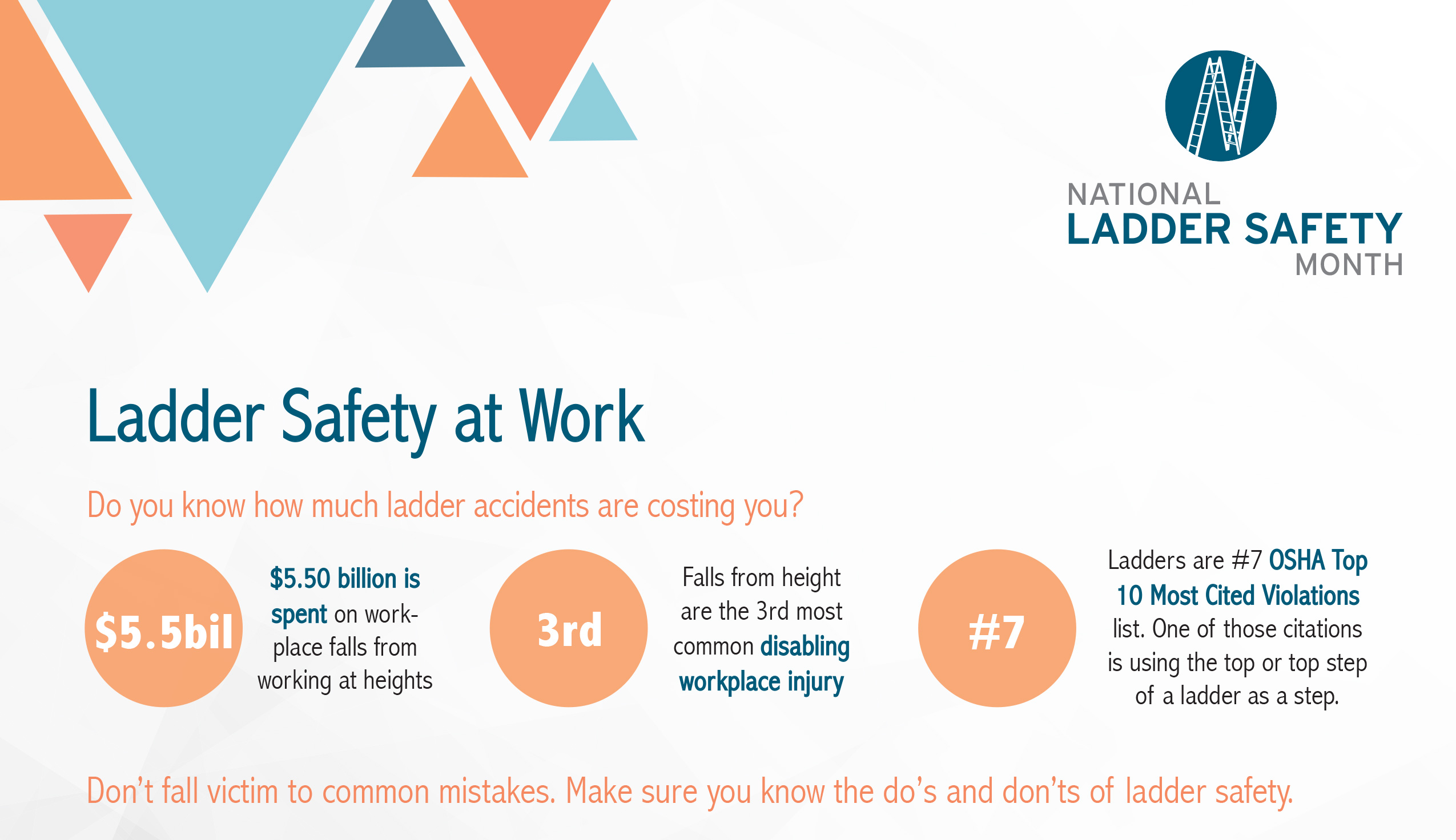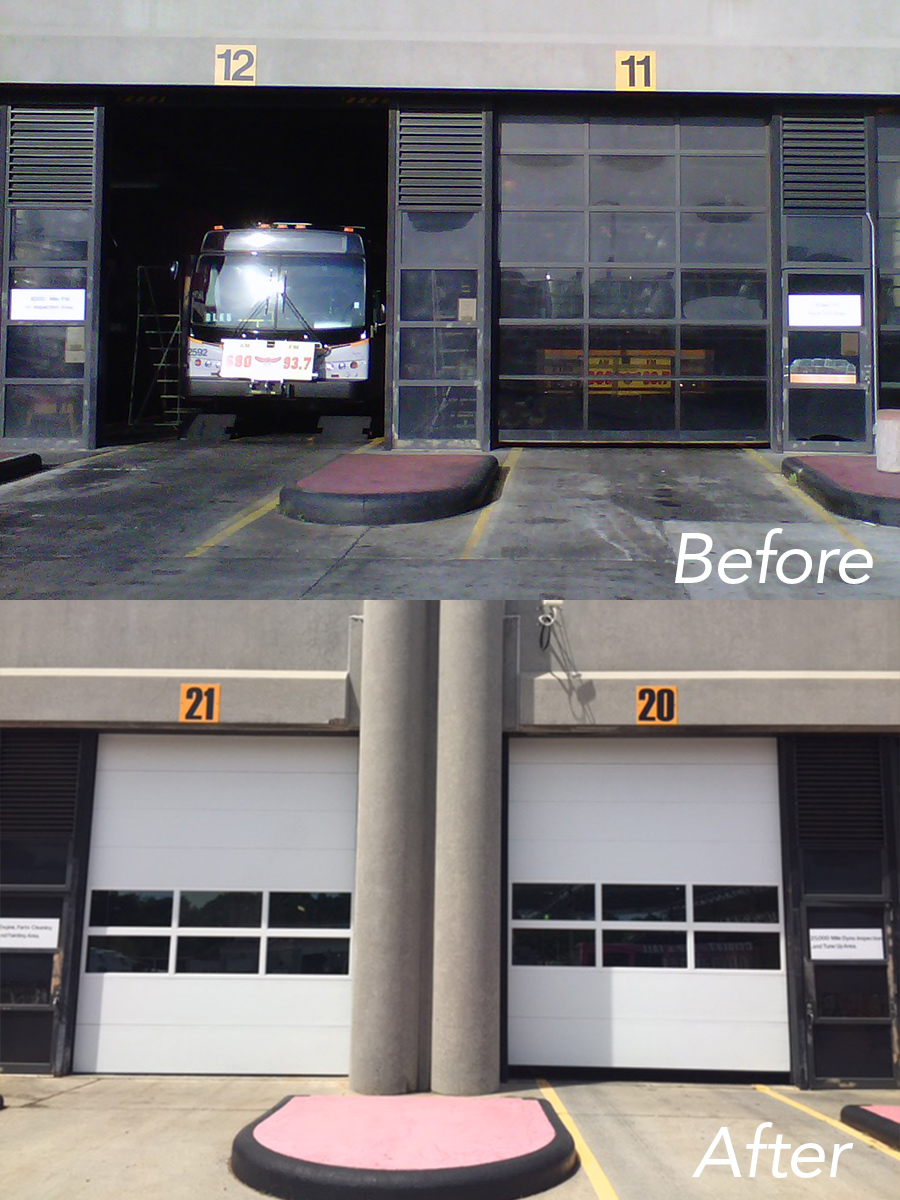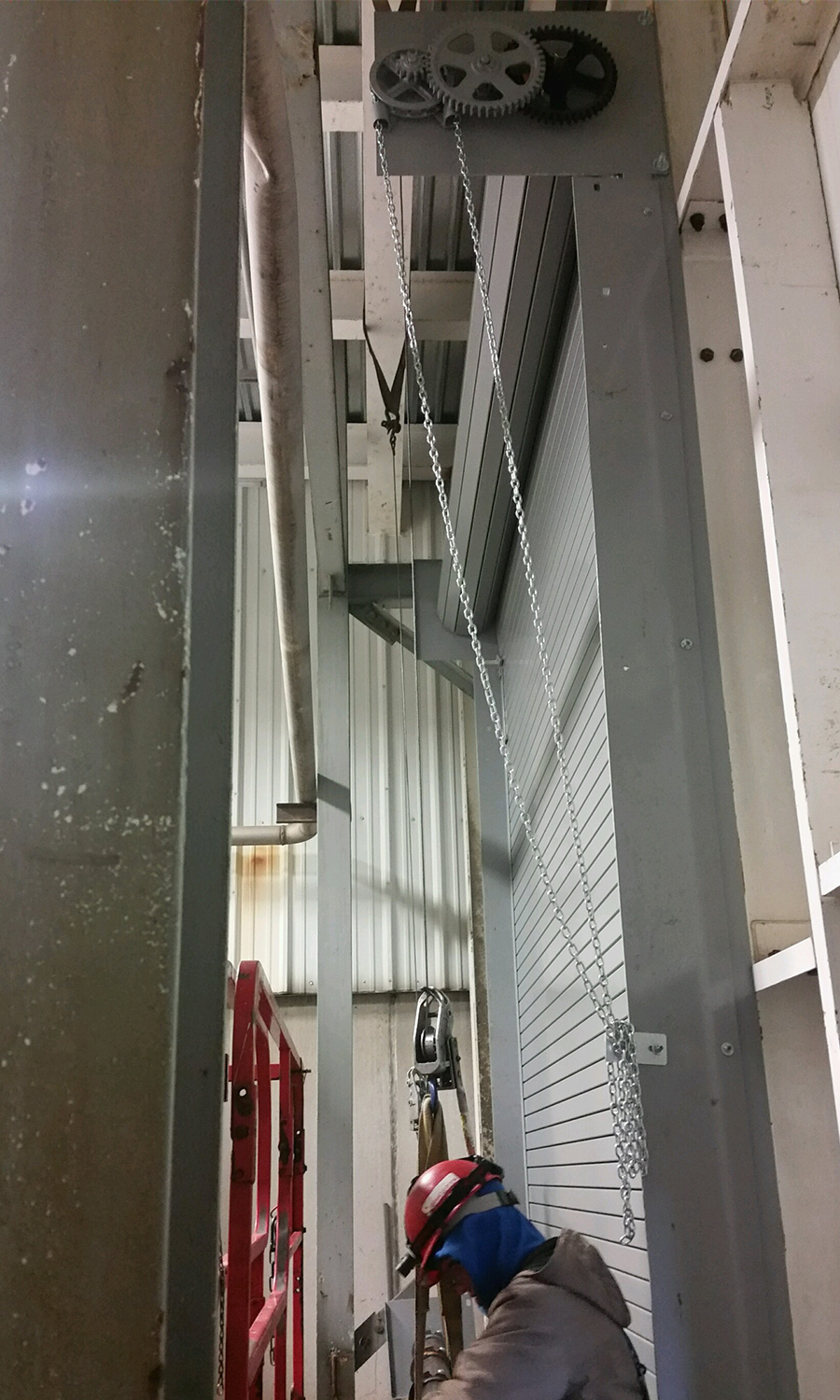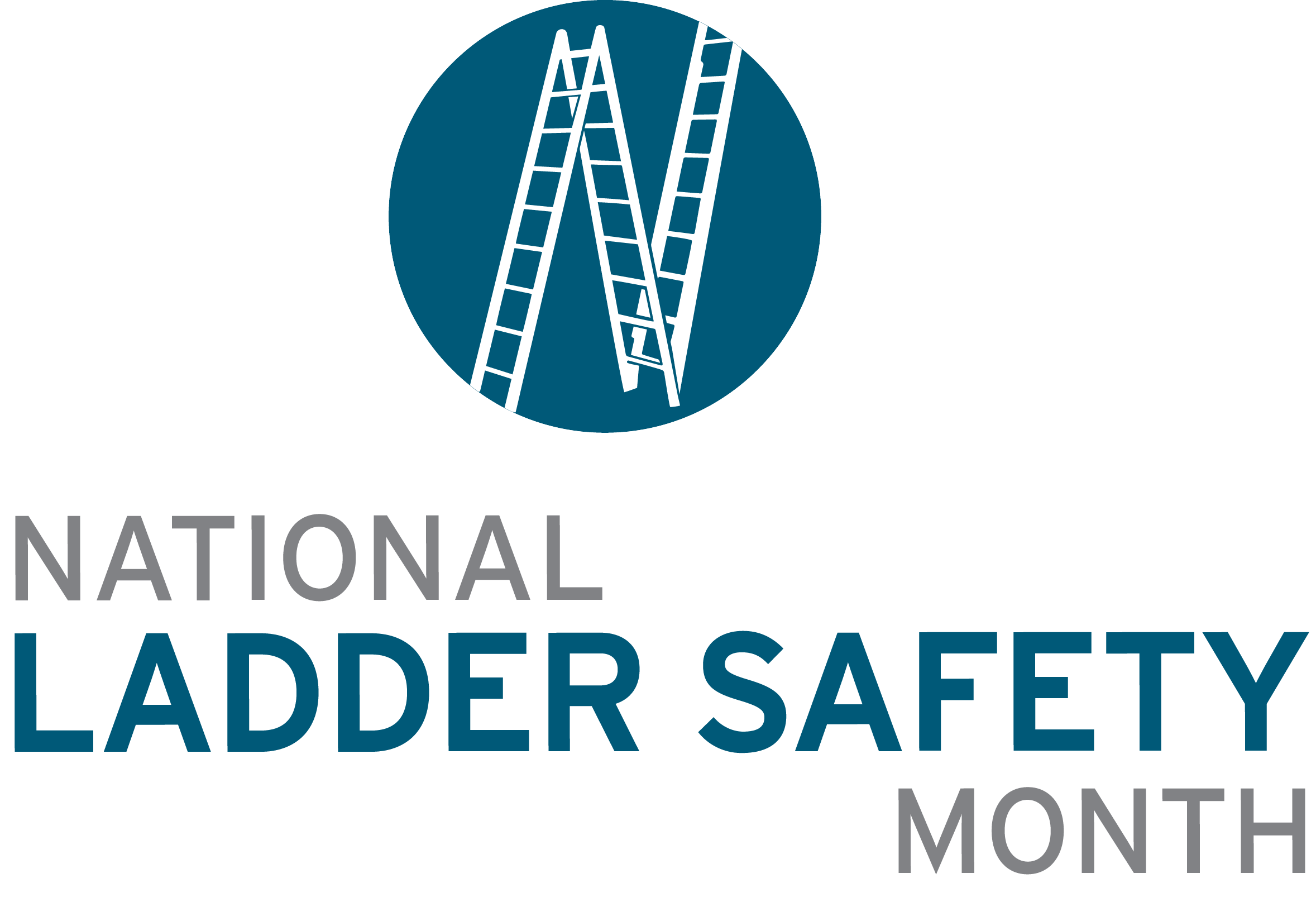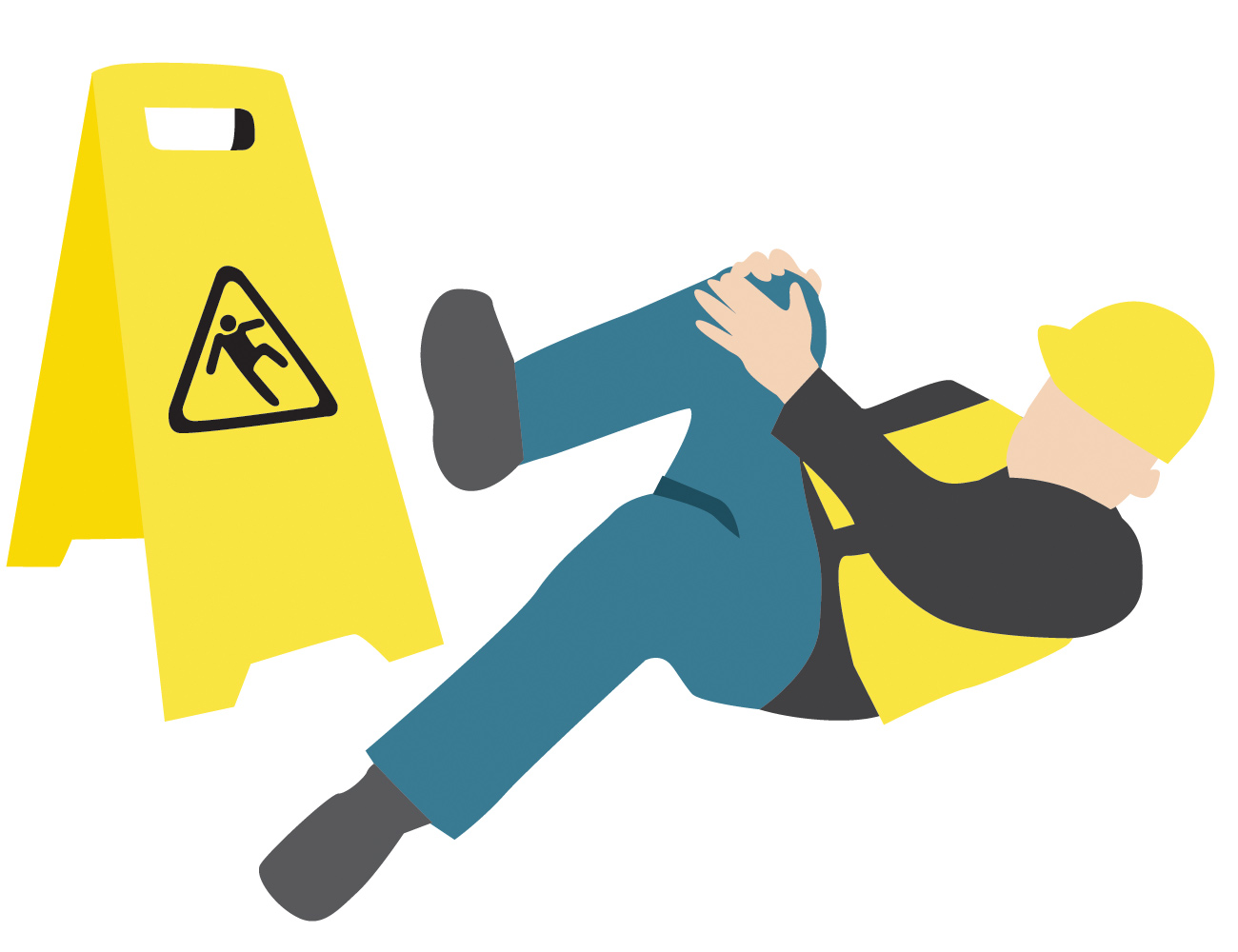National Ladder Safety Month: Ladder Safety at Work
As a National Safety Council member, our teams are diligent about safe work practices in general. With the spotlight on ladder safety specifically during National Ladder Safety Month, we will shine a light on how ladder accidents can become costly.
How Much Could Ladder Accidents Cost?
- $5.5 billion is spent on workplace falls from working at heights
- Falls from height are the third most common disabling workplace injury
- Ladders are among OHSA‘s Top 10 Most Cited Violations list,
specifically using the top step of a ladder as a step
The Do’s and Don’ts of Ladder Safety
“My weight hasn’t changed in years; I don’t need to worry about the ladder’s weight rating.”
Weight rating is the combined weight of the climber and whatever the climber is carrying. Do not forget to account for equipment or accessories when selecting a ladder with the proper weight rating.
“I have some heavy items that I’ll be carrying as I climb this ladder. Let me get a taller one to carry the load.”
Don’t forget! A taller ladder does NOT equate to a higher weight rating. To ensure that you are using the right ladder for the job, make sure that you are taking into account the Duty Rating for your ladder. The Duty Rating is the total amount of weight your ladder will support.
Here is the simple calculation for determining the Duty Rating needed for the job at hand:
- Your weight; plus
- The weight of your clothing and protective equipment; plus
- The weight of tools and supplies you are using
“I don’t work at high heights, I don’t need to worry about ladder and fall safety.”
More often than not, ladder injures are caused by people using them incorrectly. 75.7% of survey participants felt that ladder accidents in their workplace could have been avoided with ladder safety training.*
*Information obtained from an ALI survey on ladder safety.
Take safety into your own hands by taking ladder safety seriously. Visit www.LadderSafetyMonth.com to learn more.








